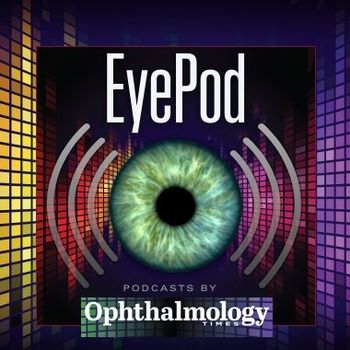
- Ophthalmology Times: October 15, 2021
- Volume 46
- Issue 17
Corneal neurotization is effective for restoring sensory innervation
Procedure transfers intact donor nerve fibers to the cornea.
Reviewed by Andrea Lora Kossler, MD; and Cat Burkat, MD, FACS
Corneal neurotization, a relatively new procedure that restores sensory innervation to a neurotrophic cornea by surgically transferring intact sensory donor nerve fibers to the cornea, seems to be safe and effective and can improve vision.1,2
The transfer of nerve fibers can be accomplished by dissecting nearby intact sensory nerves and directly or indirectly transferring the nerves using an interpositional nerve graft, such as an autologous or allogeneic nerve graft, according to Andrea Lora Kossler, MD, an assistant professor of ophthalmology at the Stanford University School of Medicine in Stanford, California.
Corneal neurotization is an important innovation because it can provide healthy corneal nerves, which are essential for maintaining corneal health, according to Kossler.
Related:
Corneal nerves evoke the blink/tearing reflexes and release neuropeptides, which aid in maintaining epithelial cell integrity.
In turn, the epithelial cells release neurotrophic growth factors that are critical for corneal nerve function.
“This dynamic interplay exists between corneal nerve health and corneal health; one must be present to have the other,” Kossler pointed out.
Cat Burkat, MD, FACS, a professor of ophthalmology at the University of Wisconsin-Madison, shared the success of corneal neurotization in the literature in stages 1 to 3 neurotrophic keratopathy resulting from herpes infection, neoplastic/neurosurgery, trauma/skull base fraction, ocular surgery, diabetes, multiple sclerosis, chemical burns, and congenital and idiopathic disease.
Although the procedure has typically been performed in more advanced disease, Burkat also suggested that the procedure could be considered earlier in pediatric cases to potentially minimize amblyopia resulting from prolonged corneal scarring, as well as in certain central nervous etiologies.
Related:
Similarly, Kossler related that she has performed corneal neurotization on stages 2 and 3 neurotrophic keratopathy but stated there are reports of efficacy in earlier stages of the disease in children or patients diagnosed with central nervous system damage if nerve damage is permanent.
The procedure
There are several techniques to perform corneal neurotization. Kossler explained the indirect approach utilizing the supraorbital nerve with an interpositional allograft. The supraorbital nerve is dissected and tagged via an eyelid crease incision.
A Wright needle is used to connect the superior fornix to the surgical space and transfer the nerve graft to the ocular surface. A conjunctival incision is made 5 mm above the superior corneal limbus.
The nerve graft is transferred to the corneal limbus and separated into its individual fascicles, each of which is brought to the 4 quadrants of the corneoscleral limbus and secured to the cornea.
At the end, Tisseel (fibrin sealant; Baxter) is placed and the conjunctival incision is closed.
The distal end of the nerve graft is then connected to a nerve wrap, which helps protect the coaptation (nerve connection).
Related:
Then the supraorbital nerve is cut for direct nerve end-to-end coaptation and additional Tisseel is applied. The incision is then closed during a blepharoplasty, Kossler described.
The donor nerves for this procedure are generally supraorbital, infraorbital, or supratrochlear nerves and can be ipsilateral or contralateral depending on intact sensation, proximity, and axon density, according to Burkat.
Donor site morbidity is also considered, as sensory changes in the forehead may be less bothersome than in the cheek.
Postoperatively, viral prophylaxis is advised when appropriate. Burkat said she removes the suture tarsorrhaphy a few weeks after surgery and measures corneal sensation with a Cochet-Bonnet esthesiometer.
“Patients are generally very comfortable postoperatively,” she said. “The corneal sensation can be often measured within weeks to months postoperatively.”
Related:
Outcomes
The outcomes were measured in 70 patients treated with the procedure from 2008 to 2020.3 There was a significant improvement in visual acuity and in corneal sensation of 37.94 mm (P < .001 for both comparisons).
Kossler explained that the maximal corneal sensation returned at about 9 months postoperatively in a range of 6.0 to 18.5 months.
“It is exciting that 14 eyes have reported successful keratoplasty in patients who have undergone corneal neurotization,” she said. “Additionally, confocal microscopy has demonstrated anatomic evidence of nerve regeneration.”
Other findings indicate there is no difference in the outcomes when techniques or graft choices are compared.
“This is an exciting surgery, and we know from the data thus far that it does work,”
Burkat said.
A future consideration is the use of folic acid, which promotes peripheral nerve injury repair by affecting the Schwann cell function. This raises the question about whether folic acid should be used perioperatively, which is under study.4,5
Related:
Kossler explained that the procedure is new, and ophthalmologists have more to learn to improve the efficacy and determine proper patient selection.
“What is known is that corneal neurotization is a safe and effective procedure for treating certain patients with neurotrophic keratopathy,” she said. “The procedure improves corneal sensation and wound healing and can improve vision. Short- and long-term evidence show nerve regeneration and clinical efficacy.”
---
Andrea Lora Kossler, MD
E:
This article is adapted from a presentation by Kossler and Burkat at the Women In Ophthalmology 2021 Summer Symposium. Kossler is a past consultant to AxoGen, Inc.
Cat Burkat, MD, FACS
E: [email protected]
This article is adapted from a presentation by Burkat and Kossler at the Women In Ophthalmology 2021 Summer Symposium. Burkat has no financial interest in this subject matter.
--
References
1. Leyngold IM, Kossler AL, Yen MT. Techniques in Corneal Neurotization. Quality Medical Publishing Inc; 2020.
2. Park JK, Charlson ES, Leyngold I, Kossler AL. Corneal neurotization: a review of pathophysiology and outcomes. Ophthalmic Plast Reconstr Surg. 2020;36(5):431-437. doi:10.1097/IOP.0000000000001583
3. Garcia G, Kossler AL. Long-term and short-term clinical outcomes. In: Leyngold IM, Kossler AL, Yen MT, eds, Techniques in Corneal Neurotization. Quality Medical Publishing Inc; 2020.
4. Iskandar BJ, Nelson A, Resnick D, et al. Folic acid supplementation enhances repair of the adult central nervous system. Ann Neurol. 2004;56(2):221-227. doi:10.1002/ana.20174
5. Kang WB, Chen YJ, Lu DY, Yan JZ. Folic acid contributes to peripheral nerve injury repair by promoting Schwann cell proliferation, migration, and secretion of nerve growth factor. Neural Regen Res. 2019;14(1):132-139. doi:10.4103/1673-5374.243718
Articles in this issue
about 4 years ago
Genetics give investigators a risk stratification in glaucomaabout 4 years ago
Physicians sort out pros and cons of several new IOLs on the marketabout 4 years ago
Technologies offer options in treatment of uveitisabout 4 years ago
Femtosecond laser-assisted cataract surgery: One physician’s storyabout 4 years ago
OCT/OCTA ocular biomarkers may help diagnose Parkinson diseaseabout 4 years ago
Neuro-ophthalmology: More to offer than just steroidsabout 4 years ago
Ophthalmology in the Big Easy: AAO 2021 welcomes in-person attendeesabout 4 years ago
A closer look at presbyopia optionsabout 4 years ago
Improving surgical outcomes for pediatric patientsNewsletter
Don’t miss out—get Ophthalmology Times updates on the latest clinical advancements and expert interviews, straight to your inbox.













































